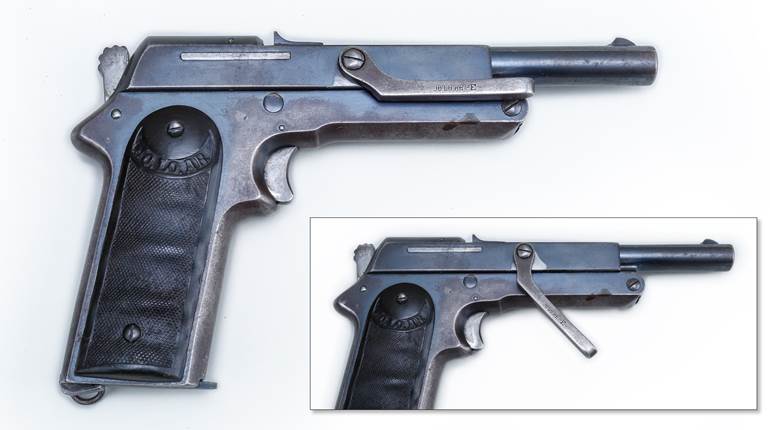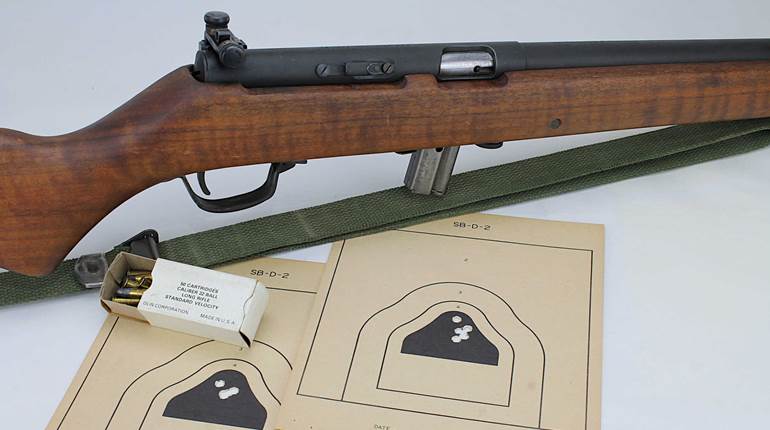
During the waning years of the Victorian era, America, the red-headed stepchild of the British Empire was maturing into a world force. The Industrial Revolution was in full bloom, and inventors, engineers and industrialists seemed to pop up in every town. Meanwhile in Utica, N.Y., Arthur Savage, a traveler of the world, businessman and adventurer, settled with his family and began to design guns.
Lever-action rifles had taken over much of the hunting public and law enforcement community, but they had one major shortcoming. Their under-barrel tubular magazines could not be safely loaded with spire-point bullets, thus they were limited in terms of trajectory and energy. Savage and his son, Arthur John, designed a lever-action rifle that had its magazine contained within the stock in the Model 1895, and later, the magazine was incorporated into the receiver. Savage patented his rifle and dreamed of lucrative contracts with the U.S. War Department; however, by the mid-1890s the government was committed to the bolt-action rifle. Savage continued to refine his rifle and by 1899 had developed a truly elegant firearm. The Model 99 Savage and its .303 Savage round brought high velocity and flat trajectory to the lever-action rifle.
The most notable feature on the Model 99 is its rotary magazine. First introduced on the Savage Model 1895, the magazine consists of a machined brass spool capable of holding five cartridges. A novel idea at the time, and Savage also provided a small hole in the side of the receiver that allowed the magazine to show how many cartridges were in it. The Model 99 was the first hammerless lever gun, and its spring-loaded firing pin had a much faster lock time than one fired by a hammer. The rifle also featured a tactile cocking indicator on top of the receiver toward its rear where it could be easily checked with the thumb. All of these innovations were ahead of their time.
Along with the cutting-edge improvements to the lever-action rifle, Savage, ever the astute businessman and inventor, offered his rifle in both cutting-edge chamberings as well as the standbys. The .303 Savage was initially intended to be Savage’s contribution to military rifles, but it turned out to be the first chambering for the Model 99. With its 190-grain bullet, it earned a reputation as a great bear and moose slayer, despite the fact that ballistically the .303 is virtually identical to the .30-30 Win. However, it was dropped from production at the end of World War II, and ammunition for the .303 can be difficult to find today.
Along about 1912 Savage chambered the ’99 for Charles Newton’s .22 High-Power, basically a .25-35 Win. necked down to take a .228-inch bullet. This chambering enjoyed a pretty fair amount of popularity during the early 1900s, but its non-standard bullet and a lack of accuracy in the Model 99 eventually doomed it in the 1930s.
Savage tapped Newton’s genius again in 1915 when the Model 99 began chambering the .250 Savage, which was then known as the .250-3000 for being the first commercial cartridge to break the 3,000 fps muzzle velocity threshold with an 87-grain bullet. The .250 Savage is my personal favorite chambering for this rifle. It holds a slight ballistic edge over the popular .243 Winchester, yet is as equally pleasant to shoot. With a 100-grain bullet it falls short of three grand, but it makes a nice 250-yard deer or pronghorn gun nonetheless.
Once smokeless powder replaced black powder, American shooters became enamored with the .30 caliber. The .30-06 had just won World War I, and returning doughboys wanted a .30 to take afield. The Model 99 receiver was too short to accommodate the government round, so Savage developed a shorter cartridge that came close to replicating the ballistics of the .30-06. On the cusp of the Roaring 20s, the .300 Savage debuted and proved to be one of the most popular chamberings for the Model 99. Some three decades later it was the basis for developing the 7.62 NATO or .308 Win. cartridge. During its production the Model 99 has also been produced in many chamberings: .25-35 Win., .30-30 Win., .32 Win. Spl., .22-230, .243 Win., .308 Win., 7 mm-08 Rem., .284 Win. and .38-55 Win.
The Savage Model 99 had a 98-year run—1899 to 1997, less a few years for the war—with numerous variations, each designated by a letter or two after the model number. It remains a popular deer rifle in the east, and I still see a few of them out in the west. Several others and I have badgered Ron Coburn, CEO and owner of Savage Arms, to reintroduce this great rifle, even in limited edition form. About three years ago an effort was made at Savage to do just that. Sadly, there simply was not a way to produce the rifle and make a profit today.
Collectors admire the Model 99, and prices, while still somewhat high, have not skyrocketed to the levels of the old Winchesters. If you have an old ’99, shoot it and treasure it. If not, perhaps now might be the time to keep your eye peeled for a desirable example.





































